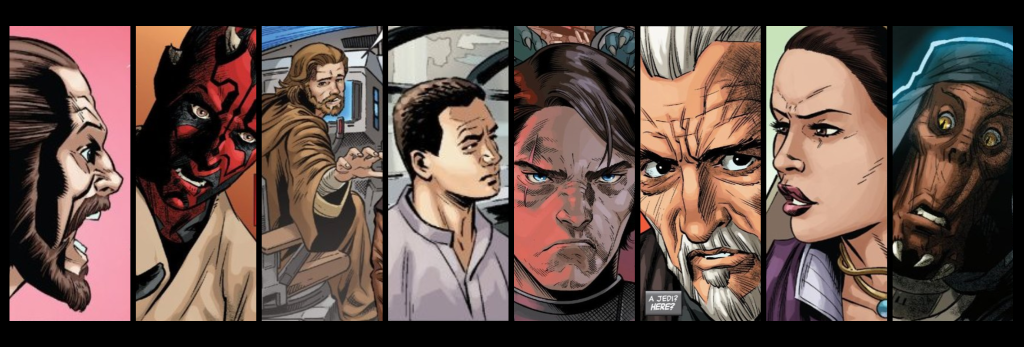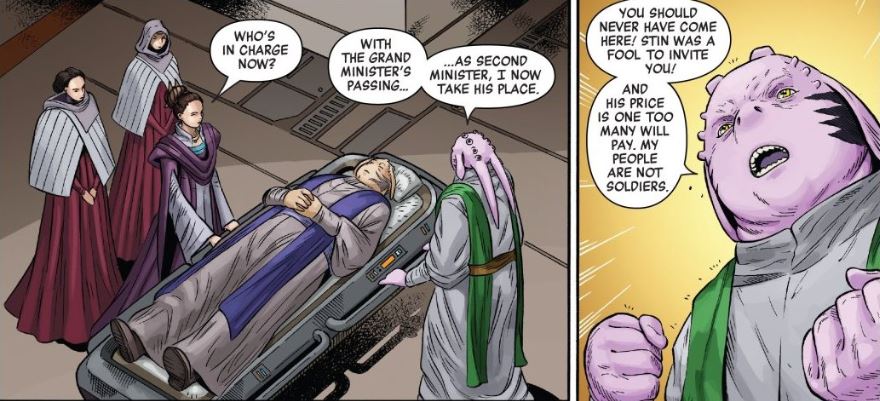
“My thoughts were in turmoil.
I can’t allow this to be done.
The Second Law of Robotics tells me I must follow orders and stay in the niche.
The First Law of Robotics tells me I cannot harm this tyrant who wishes to destroy me.
Must I obey the laws?”– Isaac Asimov, “Cal,” Gold.
My entry into science fiction fandom was shepherded by a pillar of the genre: Isaac Asimov. It’s been a while since I’ve actually picked up one of his works, but you can still see the shape of his influence in my reading habits today. Namely, I have him to credit for the array of short story collections gracing my shelves. I, Robot was the first anthology I ever read, and from there it was a series of dominoes leading to a diet of short stories and anthologies.
There are gems to be found in anthology collections. When multiple authors are gathered under a single cover, such as Unnatural Creatures, we can explore variations on a theme. How does each author interpret the topic at hand? Answering this is a kaleidoscope of ideas. When it’s the work of a single author, such as I, Robot or Ray Bradbury’s The Martian Chronicles, we get targeted explorations of the theme with deliberate nuance.
Age of Republic is an anthology that gives us the kaleidoscope and the nuance alike. It’s a work of art, a collection of individual stories beautiful on their own, but which spark to new life when seen in comparison with the whole.

“You know what Mars is? …they called them kaleidoscopes, bits of crystal and cloth and beads and pretty junk. You held it up to the sunlight and looked in though at it, and it took your breath away. All the patterns! Well, that’s Mars. Enjoy it.”
– Ray Bradbury, “Night Meeting,” The Martian Chronicles.
By the simple virtue of being a comic, each issue treats us to the joint vision of multiple creators. From Qui-Gon’s “Balance” to Grievous’s “Burn,” our experience of the stories and the themes is shaped by no fewer than four people each time. Jody Houser wrote all eight scripts. Cory Smith and Luke Ross switched off as artists between the hero and villain issues. Java Tartaglia and Travis Lanham were the colorist and letterer respectively for the series. Walden Wong inked every hero issue. [1]Wilton Santos joins Cory Smith on the issues “Mission”, “The Sacrifice”, and “Bridge”, and Marc Deering joined Walden Wong as an inker for “Bridge”. This is not even touching on the Age of Republic Special, which boasts an additional eight creators.
I wish I had enough knowledge of the comic book industry to properly break down what each one brought to the stories, but I do know that the choice of colors and shadows can shape our read of a comic’s script, pictures, and layouts. Maul’s Jedi vision is initially “lit” with the same sort of colors as the hero issues. Combined with the shadows iconic to the style of the villain issues, there’s a clash of sensibilities, placing us into the same disorientation Maul experiences. In the Grievous issue, Lanham’s lettering is taken to the next level, with contrast in characters shown simply by font choices.
The stories also provide a kaleidoscope of themes. Each hero/villain pair of issues provided a contrast of ideals. We’ve already discussed how the dueling issues of Qui-Gon/Maul and Obi-Wan/Jango have rhymed with themselves, exploring the themes of Jedi warriors and fatherhood respectively. The Anakin/Dooku set touched on themes of sacrifice; what sort of cost is acceptable and what is not. With the final two issues – Padmé/Grievous – we find Age of Republic concluding on a theme that has been the undercurrent of all the issues before.
Age of Republic is an anthology about challenging authority.

“The goddess said nothing as she appraised Ozioma. Ozioma stood tall. She’d just stared death in the eye for ten minutes. Even the goddess had implied it. Ozioma felt like a goddess herself. What was death? She met the goddess’ stare, but then, out of respect, she looked down.”
– Nnedi Okorafor, “Ozioma the Wicked,” Unnatural Creatures.
In an interview, Houser notes the contrast of power between Padmé and Grievous. Her authority comes from words, his through actions. In their issues, Houser and her team bring them both into a position where their authority is challenged.
Padmé arrives on a planet, expecting a ready-made victory for the Republic on a neutral world. What she finds instead is an overturned leadership and a new politician who blames her and opposes her efforts. Grievous, after hunting and slaying a Jedi-Padawan pair and surpassing the security measures of a Jedi Temple with ease, finds himself unable to claim the treasure within. Instead, he is chastised like a child by a presence beyond his comprehension.
Grievous’s response is to destroy the challenge to his authority. Padmé’s response is to not only respect but protect the challenge to hers. And these are the end points of the gradient explored across the anthology of Age of Republic.
In the issues of Dooku and Anakin, both characters openly challenge their masters on the lives expected to be sacrificed for the cause. Sidious rejects Dooku’s question, threatening replacement in Sidious’s favor. Obi-Wan sits and listens to Anakin’s concerns. While he does offer up counterpoints, and perhaps even disagrees with Anakin, he doesn’t shut down the conversation. Instead, he encourages Anakin to act on his feelings and praises him for it in the end.
With Qui-Gon and Maul, deeper challenges are presented. They are not content with challenging one decision of a strategic move; they question the very purpose of their path. Yoda’s concern for Qui-Gon is evident, especially with the conclusion Qui-Gon reaches. Yet he allows the disagreement to stand, finding common ground in their diverging beliefs. Sidious is not content finding common ground with Maul, not even content with Maul’s eventual submission. Rather, as hinted at in the final panels, Maul must be punished for even daring to question Sidious in the first place.

The theme of challenging authority becomes a bit more complex with Obi-Wan and Jango. Like Padmé and Grievous, their issues focus on the father figure, person with authority in the relationship.
Initially, we see Obi-Wan at extremes. We see a glimpse of the type of authority found in the villain issues, one that brooks no challenge to its power. Obi-Wan does not enforce this by harm or threats towards Anakin but through cloistering. He shuts down Anakin’s attempts to express himself, thinking he is protecting his Padawan. We also see the other extreme, where Obi-Wan lets Anakin lash out at him without any gentle correction. It’s practically a caricature of the challenge-accepting authority of the heroes. Both extremes are evidence of Obi-Wan being unsure in his authority, which leads him to either limit Anakin’s freedom or let harmful reactions go unchecked.
Jango is everything Obi-Wan is not. Jango provides firm correction to Boba’s impertinence without any threat of harm. Even when Jango refuses to aid Boba, it’s not a punishment but rather a display of trust in Boba’s abilities. This is an authority confident in itself and in those beneath it. Up until the final pages, Jango’s issue reads like one of the heroes’, moreso than Obi-Wan’s. However, those final pages of both stories flip the theme back around.
Obi-Wan experiences growth. The last few pages show Obi-Wan taking steps to become the master we see in Anakin’s issue. He yields in the areas where he was limiting Anakin and provides that gentle correction to Anakin’s earlier lash-out. By the end, Obi-Wan is finding his balance in the authority that provides guidance without oppression.
With Jango and Boba, we have to broaden our perspective. While the dynamic between the two could be considered healthy, it’s the dynamic with the outside world that’s the key. Their reputation is their authority, and like Sidious and Grievous, they will brook no challenge to it. Boba shows mercy to their final hunting partner only so that they can spread the Fett reputation further.
This theme of challenging authority can also be found within each of the stories of the Age of Republic special. Consider the Mace Windu of Age of Republic and his heroic defiance of an authority that conscripts children into a war. Notice the contrast it has with the Mace Windu and Jedi Order of The Clone Wars and their clone army and Commander-Padawans. Ventress’s increasing displays of compassion collide with the internalized authority of her Sith training, as she travels a path that will end with her saving the Jedi Order in Dark Disciple. The most direct example in the special comes from Jar Jar Binks, as he encourages Rex to think critically about even the most well-meaning authority.

“I haven’t the faintest idea how many anthologies have been published since, but I am quite certain that there isn’t an issue of any science fiction magazine that hasn’t been carefully picked over to see if any gems have remained undiscovered – nor any gem or even semi-gem that hasn’t been discovered and rediscovered and rediscovered.”
– Isaac Asimov, “Science Fiction Anthologies,” Gold.
Like Isaac Asimov’s I, Robot – an anthology which gives us a nuanced examination of the laws governing robots – Age of Republic offers a nuanced examination of how challenges to authority are received. Villains and heroes are marked by their response to these challenges, but not in stark black-and-white. Rather we are allowed to explore the gradients of it, both from the perspectives of those with authority and those under it.
However, this is hardly the only interpretation we can read into Age of Republic’s run – narrowing in on this one theme leaves many aspects of this anthology unexplored. Age of Republic is a comic series worth revisiting from the pens and perspectives of many readers, for no two viewers see the same images when looking through a kaleidoscope.
| ↑1 | Wilton Santos joins Cory Smith on the issues “Mission”, “The Sacrifice”, and “Bridge”, and Marc Deering joined Walden Wong as an inker for “Bridge”. |
|---|

2 thoughts to “Age of Republic – A Nuanced Kaleidoscope”
Comments are closed.